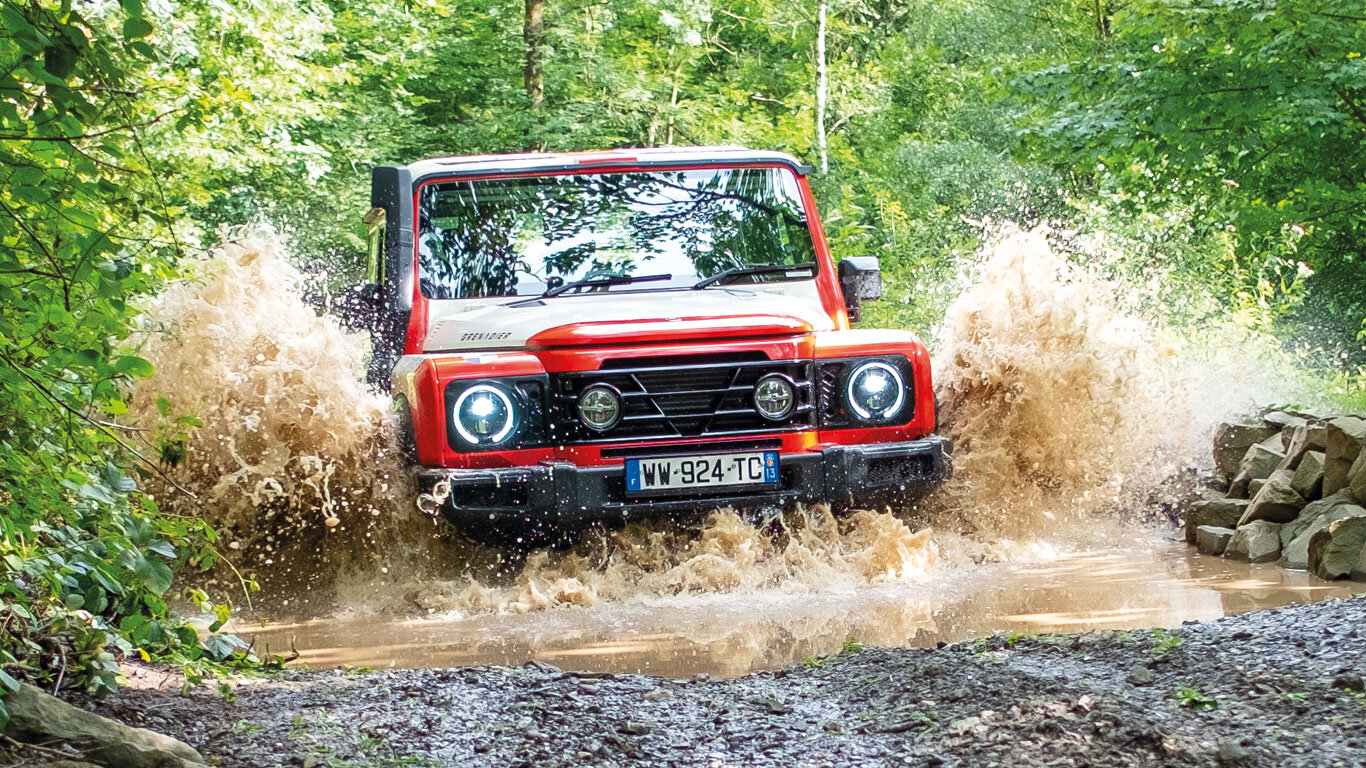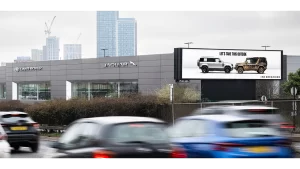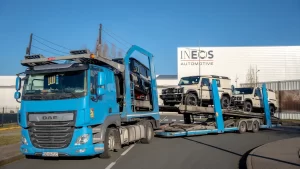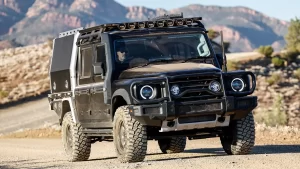Seriously, can you expect a company with zero experience in the automotive industry to produce a competitive 4×4 off-road vehicle capable of filling the void in the market left by the traditional marques?
Just five years after first announcing Sir Jim Ratcliffe’s intention to build an off-road vehicle in response to the demise of the original Land Rover Defender, INEOS Automotive have sent Built-on-Purpose Grenadier prototypes into the real world on touchy-feely roadshows for potential buyers. They’re even tempting early birds to buy a reserved spot at the front of the line for when the order books open in advance of delivery in the second half of 2022.

Even for a seasoned car manufacturer, developing a brand new vehicle from a blank piece of paper, and having it ready for market in that space of time, would be an ambitious undertaking.
Opportunity recognised, challenge accepted. But is it feasible?
Land Rover, Jeep, Toyota, Nissan—just some of the brands that spring to mind when we think of 4×4 utility vehicles. Brands with undisputed reputations and histories dating back as far as the 1940’s in some cases. However, each of them has distanced themselves from the traditional utility market in favour of comfortable electronic-infested SUVs created for mums and dads on their commutes and school runs. Vehicles driven by bottom-line results and good for the shareholders. Taking such corporate decisions at face value, is the utility vehicle market large enough to sustain an automotive manufacture on its own? After all, those big brands all moved out of the segment despite having strong sales in other 2×4 markets to support their business.
Can a new company devoted to such a small market segment, survive and still be around in five or ten years?
Enough with the doubt. Even though the prototypes still have a while to go before completing their 1.8 million test kilometres, and certain features are still undergoing fine tuning, there are enough Grenadiers running around to give us a pretty good idea of what we can expect when the final version runs off the production line in Hambach, France, next year. So let’s take an objective look at what’s beneath its skin, and learn what INEOS Automotive’s director, Dirk Heilmann, and Head of Sales & Marketing Europe, Klaus Hartmann, had to say when I met them at their HQ in Böblingen, Germany.
BASIC CONCEPT
First and foremost, having recognised an opportunity, INEOS Automotive is developing an affordable 4×4 built upon virtues swept aside by most of the traditional 4×4 manufacturers: boxy, upright body, minimal electronics (in today’s terms), adequate comfort, able to work in the harshest environments, and reliable. The Grenadier follows the principle Built on Purpose and will satisfy the specific needs of farmers, emergency services, landscapers, overlanders, and many more commercial and consumer customers.
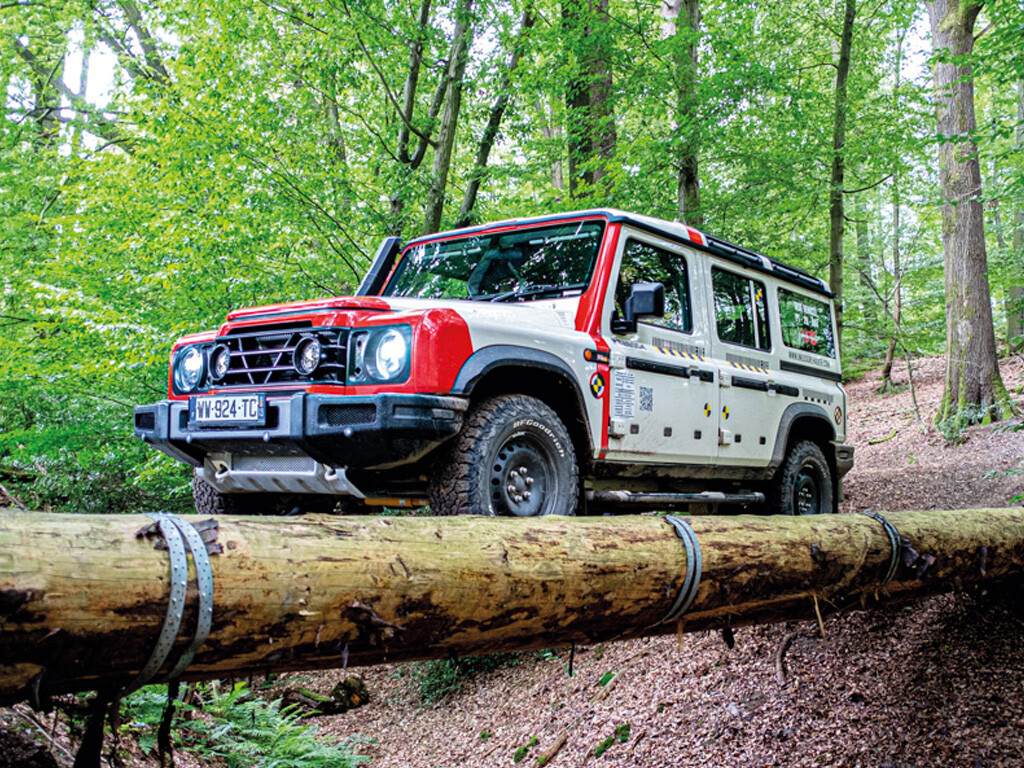
With their sights set high, and with not inconsiderable financial resource, the company has built a network of industry experts. Yes, the adage “it’s not what you know, but who you know” may be well worn, but why reinvent the wheel if you can build relationships with industry leaders such as MAGNA, Carraro, BMW and ZF? Add Toby Ecuyer as the chief designer to the equation and, even though he, too, is new to the automobile industry, the car is certain to have flair whilst creating harmony between traditional accents and 21st century car legislation.
UNDERNEATH
The strongest platform for a dedicated off-road 4×4 is a ladder frame, a concept proven time and again for the last 70 years. It provides the most versatility in terms of product offering: short wheel base, long wheel base, 5-door, pickup, or cab and chassis for industrial applications, and is ideally suited to mounting accessories such as winches.
Dirk Heilmann: “The chassis is the backbone of the Grenadier. A no-nonsense ladder-frame chassis, manufactured by Gestamp in Bielefeld, Germany, has a 2.91-metre wheelbase and is fitted with beam axles front and rear. Our concept of a durable and reliable 21st century off-roader is dependent upon the durability and reliability of its components. Not having electronic components in the chassis, and dispensing with complex air suspension in favour of traditional coil-sprung damping, is a big step toward what we aim to achieve, so that is what we’ve done.
Considering we expect the car to be used in extreme terrain, we have chassis-mounted recovery points at all four corners specified to five tons each. In the real world, we can expect to salvage and be salvaged.
Durability, for me, is something that comes with maturity. So when we started to look for solid beam axles, we looked at what was already available and, after testing the few existing off-the-shelf products on the market, we found that most of them failed under the conditions we subjected them to. In the end, we went to our partner Carraro and asked them to develop axles especially for this heavy-duty vehicle.”
Heavy duty refers to the weight class of the Grenadier which will be available as a five-door vehicle from the outset, in two specifications: passenger car and commercial car. Without compromising on durability the car will have a net weight of between 2.5 and 2.6 tons, and a gross weight of 3.5 tons.
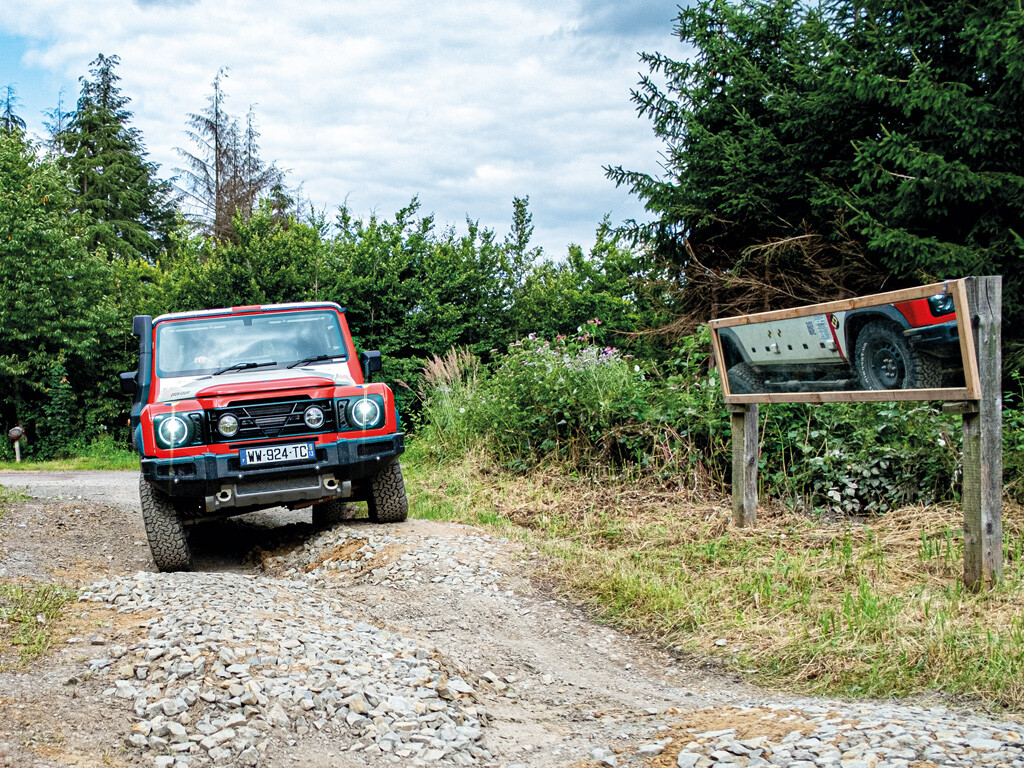
In regard to suspension, development criteria included optimising traction in varying terrain, ground clearance, axle articulation, and suspension travel. In addition to the comparative simplicity inherent with coil springs, the Grenadier benefits from a progressive spring curve in relation to vehicle load. To compliment the vertical damping, the axles are stabilised against any rotational or lateral movement by strong top and bottom links and impressively dimensioned Panhard rods.
The Grenadier will be available either with 17” steel wheels or 18” alloys. “Why not 16-inch steel rims?” you might ask. Propelling a gross vehicle weight of 3,500 kg along the highway also means it’s going to take some sizeable discs to generate the necessary stopping power. Simply put, the disc brakes specified for the Grenadier wouldn’t fit inside a 16” wheel.
DRIVETRAIN
BMW 3.0-litre straight-six-cylinder petrol and diesel engines have been chosen due, amongst others, to their reliability, global support, and the ability to conform to emission standards in every market. Remapped especially for the Grenadier to provide plenty of smoothly delivered low rev torque off road, along with good on-road and trailer performance, the numbers for the petrol and diesel variants look promising: 211 kW / 283 BHP/ 459 Nm and 186 kW / 250 BHP / 500 Nm respectively.
Looking slightly further down the line, INEOS has partnered with Hyundai to produce a hydrogen powered electric alternative.
With the concept of a manual gearbox option off the table, INEOS Automotive have chosen the same proven ZF 8-speed torque converter automatic gearbox already installed in popular 4x4s such as the Land Rover Defender, Jeep Gladiator, Grand Cherokee and Wrangler, and VW Amarok.
The newly developed manual two-speed transfer case is being supplied by TREMEC and offers permanent 4×4 drive.
A central diff lock will come as standard on both the passenger and commercial vehicles. Front and rear locks are cost options which can be configured separately.
BODY
Form follows function is the best way to describe the body. I asked a number of people what they see when they look at the Grenadier for the first time: traits of the G-Wagon and (old) Defender are hard to ignore. Its boxy shape, flat windscreen, vertical sides and rear, all follow the traditional utility 4×4 design we’ve grown accustomed to over nearly three quarters of a century. The same shape that young kids instinctively put to paper when they draw their first cars. The same shape that spawned an industry. The same shape that, during the era of the Land Rover Series 1, 2 and 3, defined the first vehicle that more than half the world’s population ever saw.
Old school indeed. But in a real world, the exterior shape defines interior space and practicality, which is exactly what farmers, hunters, equestrians, and commercial operators need.
Dirk Heilmann: “The design is very simple: boxy, a wheel at each corner, short overhangs front and rear, and good ground clearance, all characteristics of a utility vehicle. The tops of the front wings are flat so that they can be used as a workspace or for putting things on; the side panels have integrated rails and load-bearing fixing points, which means you can easily attach items you might not want to keep inside.
Looking at the business end of the roof, from the B-pillar to the rear, we have specified a roof load capacity of 150 kg. Where roof windows on some vehicles were the norm, we are providing lashing rails so that you can safely carry a load on the roof without installing a roof rack. Having said that, we deliberately opted to have a traditional gutter around the roof so that customers can use a roof rack they may already own or pick an aftermarket item.
At the rear we have split doors. The goal was to provide an opening as high and wide as the interior space. The doors are one third and two thirds so that you can put in smaller items and bags without having to open the complete rear with the exterior mounted spare wheel attached. This also makes it far more practical in urban parking spaces.
The shell is steel and the hang-on parts are aluminium, for weight reasons.”
At the front of the car, the grille has round LED headlamps, integrated spot lamps, and the bumper is made of sturdy steel which will conceal an optional winch. At the rear, round light clusters in each wing are another nod at yesteryear’s simplicity. The approach and departure angles are 35.9°, the ramp angle hasn’t yet (at the time of writing, at least) been finalised—because the five-link rear suspension configuration is still being modified to increase the existing 256 mm ground clearance.
There is an option to have two removable glass panels above the driver and front passenger seats. I have flashes of an observer standing on his seat helping the driver navigate through difficult terrain or crocodile infested rivers…or taking wildlife photographs on a safari.
INTERIOR
The interior reveal had an astonishing impact on followers of the car’s development.—even our own video on YouTube has been watched more than 40,000 times.
The driver and front passenger seats are made by RECARO and, in tune with a lack of complexity, are manually adjusted without electronic aid. Sitting behind the wheel, my fist impression was that the seats are supportive in all the right places, my shoulder was not butted up against the B-pillar, there was plenty of space for long legs, and bags of headroom.
Dirk Heilmann: “We wanted a space which is functional, purposeful, and still comfortable. In creating an interior which is clear, easy to use and understand, we even took clues from aviation where you need to make quick decisions and not push the wrong button.”
Starting between the front seats, the console extends through the dashboard, where there is a large touchscreen, and continues into a roof panel. As opposed to burying functions into complex menu structures on the screen, switches on the dashboard let you select the basics such as heated windows and seats, air-conditioning, and audio controls—everyday functions, if you like.
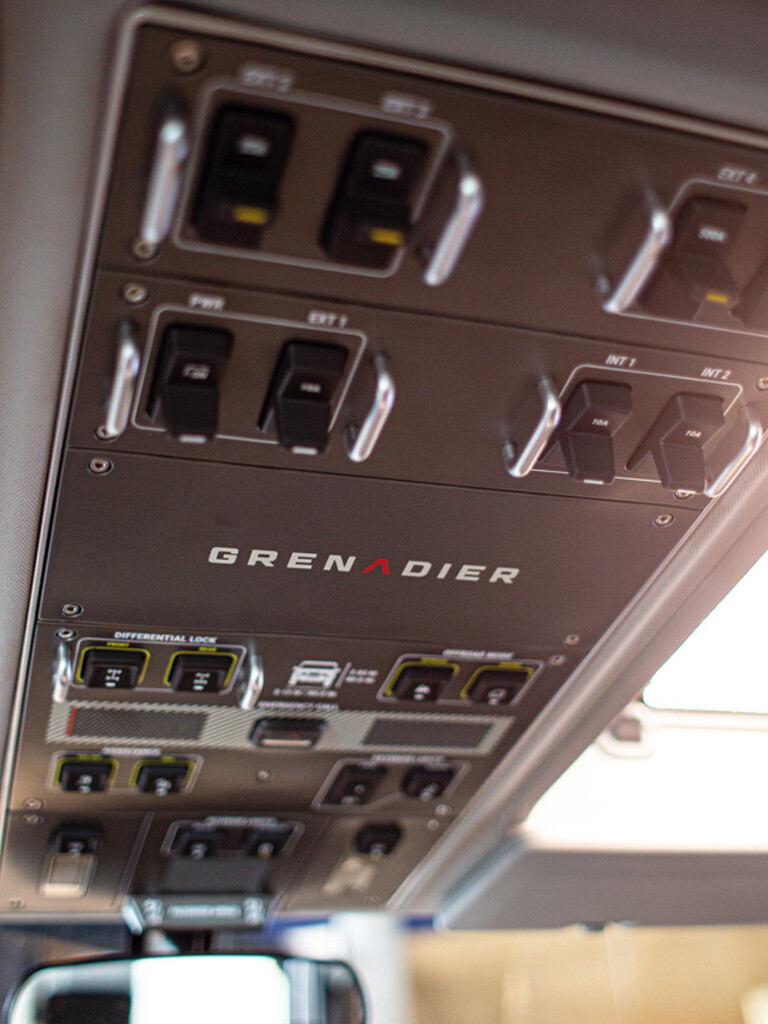
The roof panel, or off-road panel, houses controls for interior lights, exterior auxiliary lights, diff locks, and off-road mode. There are also pre-wired blank switches for further equipment, such as winches – you don’t need to concern yourself with finding space for a switch, drilling into the dash, and feeding wires through the cockpit. The idea behind the roof panel is that the passenger has easy access to the controls, too, and can assist the driver by leaving him to concentrate on the terrain.
Even though there is a large touchscreen, you still have the option to select and execute functions via a control dial between the seats if you are wearing thick and wet gloves—this also alleviates the difficulty of trying to accurately hit controls on a touchscreen in difficult terrain.
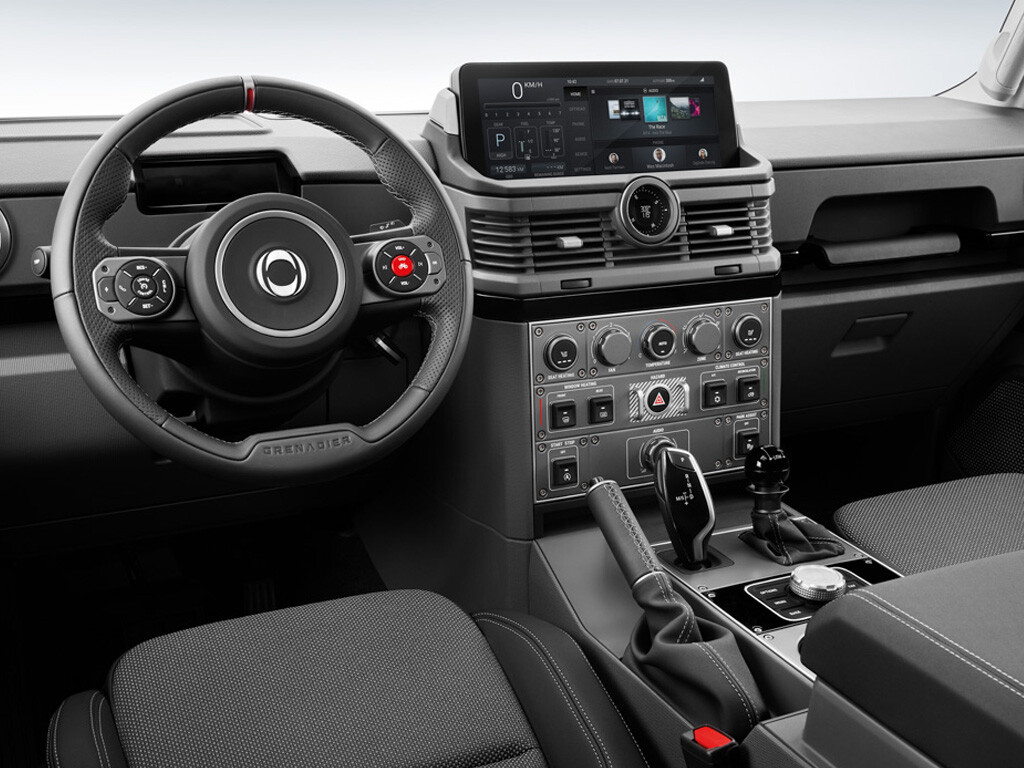
The steering wheel is comfortable to hold and equipped with an array of controls, including a red button which operates a “friendly” toot to warn cyclists or pedestrians without giving them a full blast of the main horns.
Some will like the cockpit concept, others may struggle with the layout. It is functional and practical.
The rear seats are firm and provide ample legroom even for tall passengers. Under the seat base, there is some storage space and the battery. In its commercial guise, the rear seat makes way for a flat floor extending from the rear door to behind the front seats.
The floor space is designed to be hosed out. Obviously, you don’t want to start pressure washing the dashboard, but removable plugs in the floor mean excessive dirt can be rinsed away.
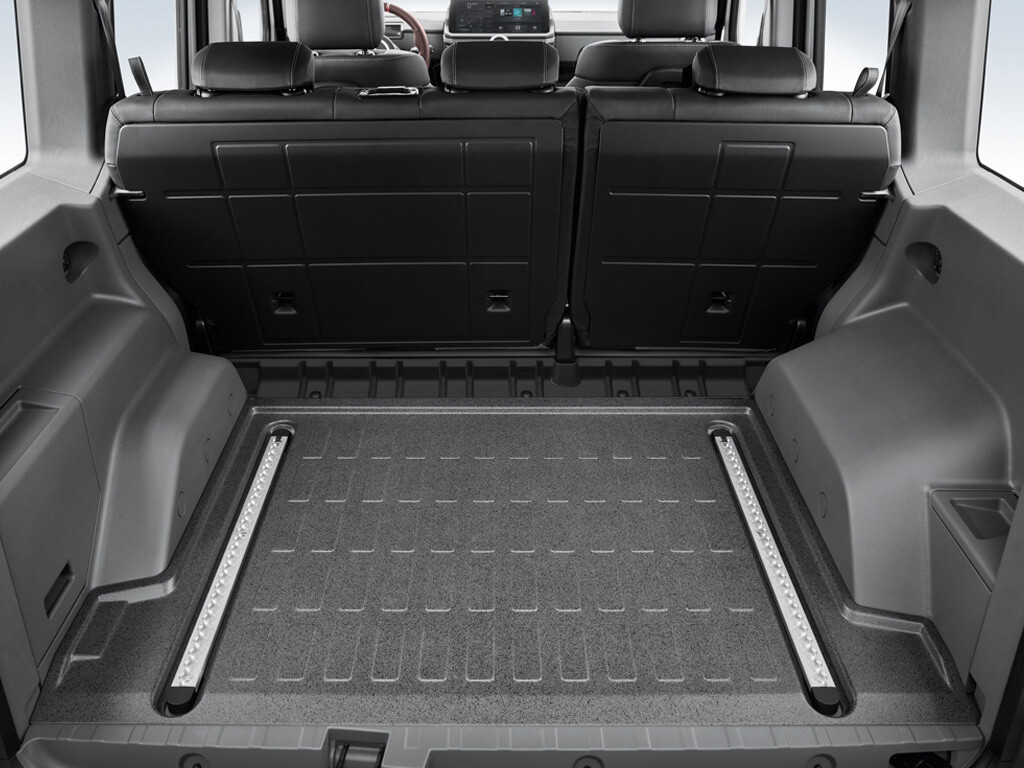
Trim on the interior can be hardwearing and dirt resistant, or more comfortably detailed with carpets.
OPTIONAL ACCESSORIES
Other than some items that have been mentioned in conversation such as winches for front and rear, diff locks on both axles or a choice of steering wheels, I haven’t seen any definitive lists of what will be supplied ex factory. However, the company is encouraging independent suppliers to create their own range of accessories for the Grenadier and will provide the necessary drawings to support this concept.
PRICE
Starting price in Germany is €59,000. Pricing can vary in different countries respective local legislation, tax, and CO2 levies.
DRIVING EXPERIENCE
So far, I haven’t yet had the opportunity to drive the INEOS Grenadier myself, but I did join the roadshow at a location just outside of Cologne and experienced the car from the passenger seat. Unable to drive the car, sitting in the passenger seat during a thorough demonstration does have the benefit of being able to experience the vehicle in every situation without having to worry about its cockpit layout or exterior dimensions in tight passages.
So, being driven through a forest, up and down steep slopes, on loose surfaces, through cross-axle sections and fording some water, I could concentrate on how the vehicle responds to each situation. Ok, these are professional drivers, navigating through an obstacle course that has been laid out to the vehicles advantage and everything is rehearsed. Possibly not the most objective of tests, but still a good representation of the vehicles capabilities.
SUSPENSION
Whether mindfully driven along boulder-strewn paths or fast forest tracks with protruding roots, the suspension leaves little to be desired. The axles have a good amount of travel, and the damping smoothens the terrain in a manner other manufacturers would wish they had developed. When we talk about beam axles combined with coil springs and shock absorbers, you may well anticipate a firm ride. However, the suspension is really impressive and does a good job at isolating the passenger shell from the rugged terrain beneath the wheels.
CHASSIS
Stretching the suspension through cross-axles stages with at least one wheel pawing the air, don’t hold back if you want to open a door and get out. This chassis is as rigid as it comes. Ground clearance is good but can certainly be improved if the rear suspension linkage can be modified.
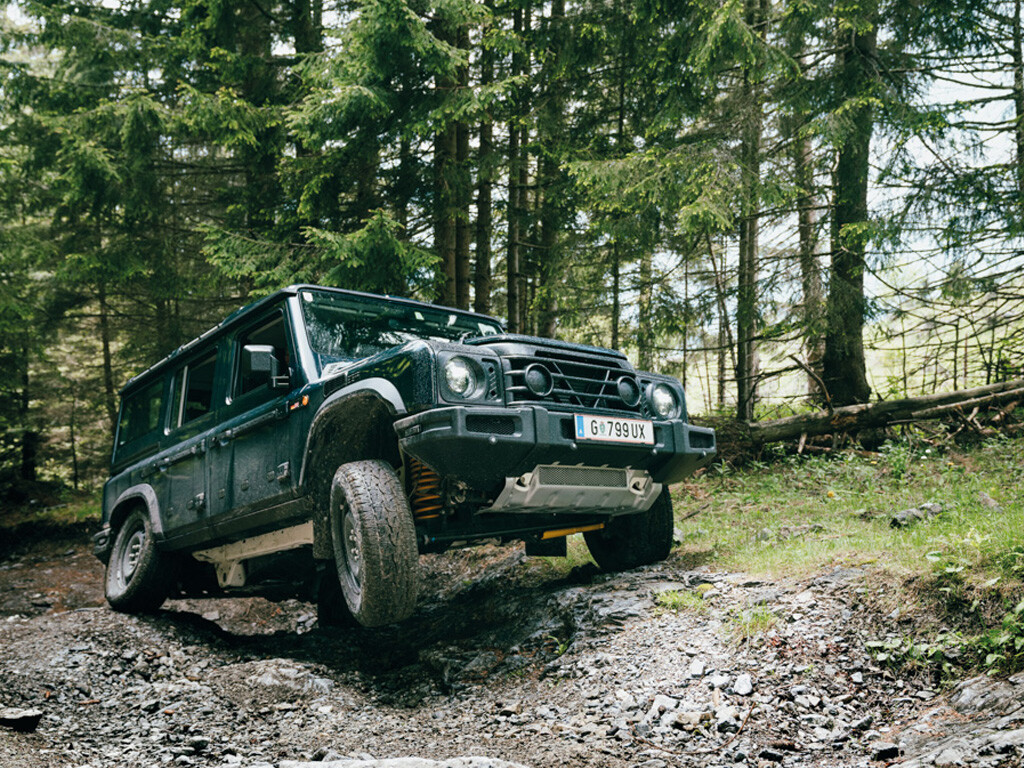
ENGINE AND GEARBOX
There is plenty of torque available from low revs. Ideal for slow manoeuvres through difficult terrain and towing up to 3.5 tons. As engine speed increases, horsepower is unleashed which will be useful on and off pavement. The engine is civilised and the cockpit is well insulated against noise. Whereas gear changes are smooth, the manual override also offers added flexibility. The top speed is restricted to 160 km/h.
INTERIOR
The front seats provide the support you need in 4×4 terrain. Sound levels are good and it is possible to hold a conversation even with passengers in the back. I can only speak for the front row passenger seat, but the comfort levels and general ambience make me look forward to long stretches of highway.
SALES & SERVICE
In preparation for the sales launch in July 2022, INEOS aims to establish a network of 200 customer centres worldwide which will be enhanced by a comprehensive online platform. INEOS partners are being selected based upon their experience in the off-road market.
INEOS has been working with Robert Bosch GmbH for the last three years to establish a service network comprising more than 10,000 workshops in 150 countries. INEOS also aims to provide a 24-hour spare parts supply chain.
At the end of the day, the customer can choose if he would prefer to purchase his vehicle by visiting one of the bricks and mortar dealerships or online. INEOS will also be offering financial services and trade-in options.
CONCLUSION
The INEOS Grenadier is the 4×4 a large audience has been waiting for: no frills, practical, spacious, robust, minimal electronics (comparatively), powerful and comfortable. The Grenadier has everything a utility vehicle needs and forfeits much of the bling and technology other manufacturers feel compelled to thrust upon their customers.
As far as overlanding is concerned, yes, the Grenadier has a lot of potential and certainly fills the current gap in the market. There will be a longer wheelbase version available as a 7-seater, so in its commercial variant, that should equate to more space for gear or living in.
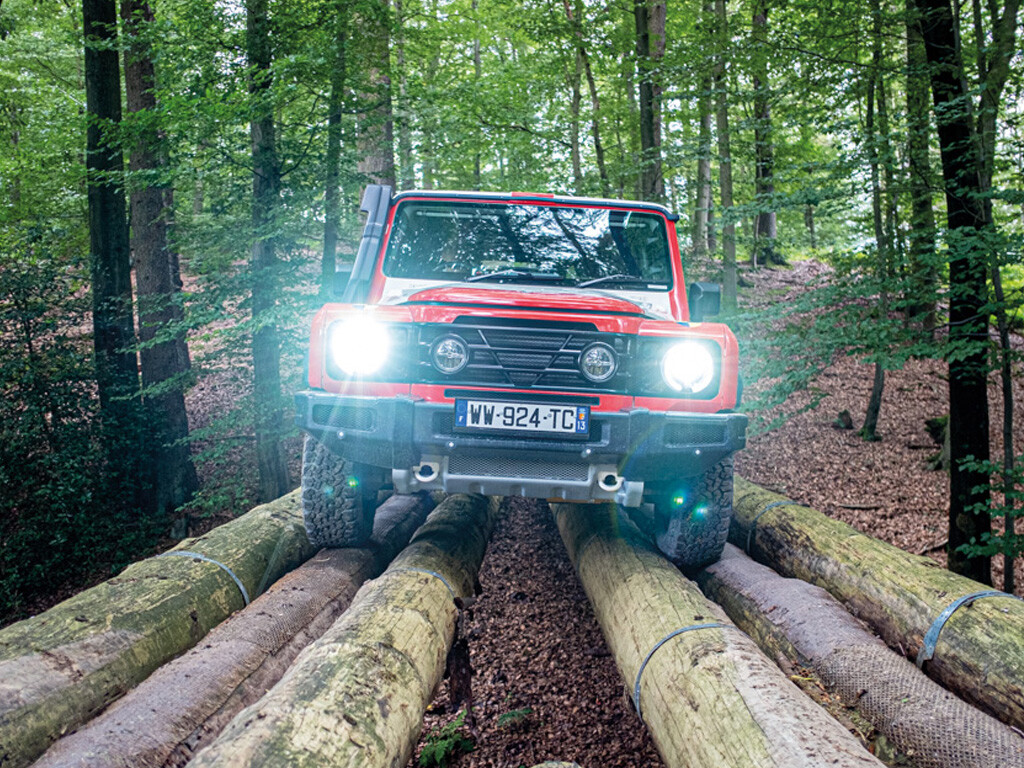
To answer the questions posed at the beginning of this article, INEOS Automotive has the resource, patience, skilled management, and network of seasoned suppliers to build a 4×4 utility vehicle with Best-in-Class potential. The utility vehicle market volumes may indeed be small compared to those of SUV or two-wheel drive, but on a global scale and in the absence of any serious competition with a similar product range, the Grenadier is definitely a viable long-term business strategy which is about to seriously shake up the market in the short term.
I look forward to the next developments and to the opportunity to include the INEOS Grenadier in one of our upcoming projects.
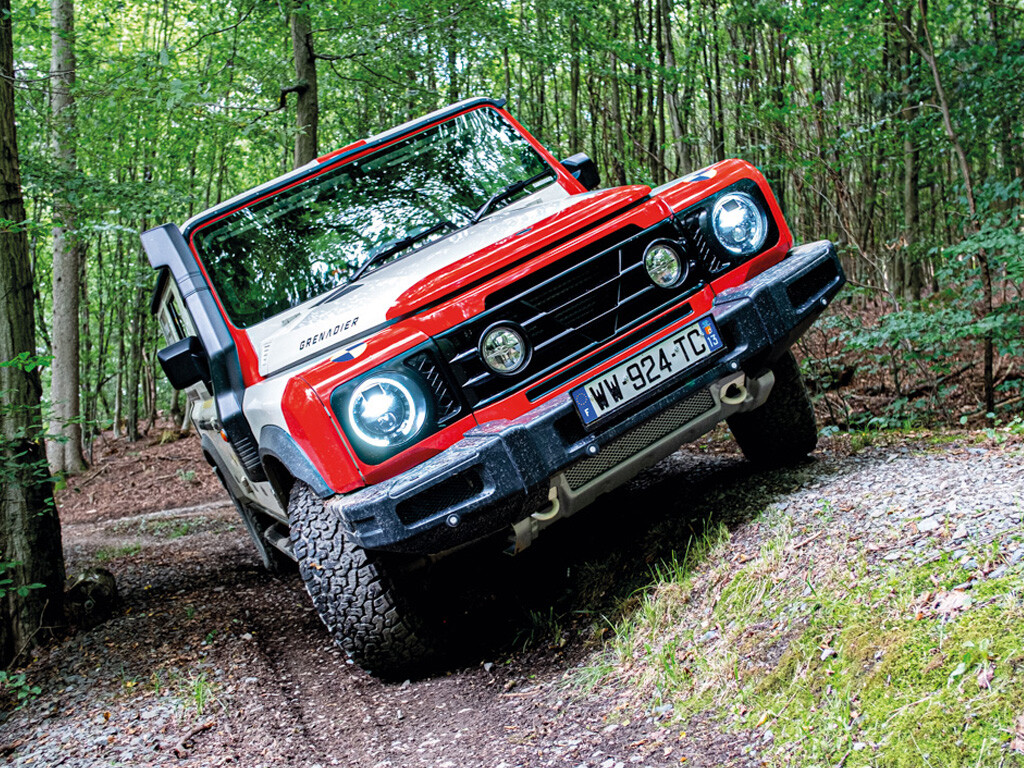
This article first appeared in the Summer 2021 issue of Overland Journal now available as a digital magazine on the Apple App Store and Google Play Store.

